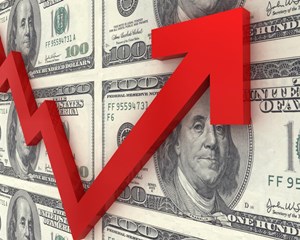America's economy
美國經濟
Snapback
強勢回升
Why the world's largest economy is beating forecasts?
世界第一大經濟體為何遠超預期?
"When Americans vote in November, unemployment will be below 6%," declared Lars Christensen, a maverick economist, in May. Given that lockdowns had sent the unemployment rate soaring to 14.7% only the month before, it was a bold prediction. In June at least 14 of the Federal Reserve's 17 interest-rate-setters forecast that quarterly unemployment at the end of the year would still be above 9%. Most other prognosticators were equally gloomy. They expected American GDP to collapse in 2020 and recover relatively slowly. Mr Christensen insisted that natural disasters, unlike financial crashes and recessions brought on by economic policy mistakes, are typically followed by rapid recoveries.
克里斯坦森(Lars Christensen)是一位特立獨行的經濟學家,他于5月稱“待11月美國大選投票之時美國的失業率將降至6%”。該預測十分大膽,因為就在一個月前,封鎖已經致使美國的失業率上升至14.7%。而在6月,17位美聯儲利率制定者中有至少14位預測今年年底的季度失業率仍將高于9%。大多預測者都持悲觀態度,他們預計美國的GDP將在2020年崩盤且回升的速度會相對緩慢。然而,克里斯坦森卻堅持認為天災不同于由人為政策失誤導致的金融危機和經濟衰退,因為前者過后的經濟回溫往往較為迅速。

He may be proven right. Over the summer the unemployment rate fell fast, to 8.4% in August. And economists have scrambled to upgrade their growth forecasts (see chart). On September 16th the oecd, a rich-country think-tank, predicted that the American economy would shrink by 3.8% this year, rather than the 7.3% expected in June. The outlook was upgraded across the rich world, but nowhere by as much. America still faces a recession about half as deep again as the one it endured after the financial crisis. But expectations are not as apocalyptic as they were—and look better than they do in most of Europe.
事實證明他可能是對的。失業率在整個夏季持續走低,到8月已降至8.4%,經濟學家們開始手忙腳亂地變更自己的增長預測。9月16日,某發達國家智囊團預測美國經濟今年將萎縮3.8%,遠低于其6月預測的數字7.3%。雖說所有發達國家的經濟前景都得到了提升,但沒有誰能比得過美國。美國的經濟衰退雖尚未痊愈,殺傷力卻已低至金融危機后的一半。此外,人們的預測也較之前更為樂觀,甚至超過了對多數歐洲國家的預測。
The upgrades in America can be attributed to three factors. First, the spread of the coronavirus in the southern "sunbelt states", which rode a wave of the epidemic in the summer, has slowed. Second, America's economic stimulus, the world's largest both in absolute terms and as a proportion of GDP, has been potent. Thanks to onetime stimulus cheques worth up to $1,200 per person and an extra $600 a week in unemployment-insurance (ui) payments, households' disposable income has risen since the pandemic began. Americans did not spend the money all at once, meaning that it continues to support consumption today, even though most of the emergency support has expired. In early September ui recipients were still spending more than they did before the pandemic hit.
美國經濟預期的提升歸結于三大因素。首先,美國南部的“陽光州”曾在夏季遭遇一波新冠重創,而如今新冠傳播的速度在該地區已經放緩。其次,美國的經濟刺激無論按照絕對數量還是按占國內生產總值(GDP)的比例來計算都是世界上最強的。美國的刺激支票曾一度高達每人1200美元,外加每周額外600美元的失業保險,這使得美國家庭的可支配收入自新冠開始以來持續增長。況且,美國人并沒有一下子把錢花光,這意味著即使大部分的緊急援助已經到期,這筆錢仍可繼續支持消費。直至9月初,養老金領取者的支出仍高于疫情爆發之前。
譯文由可可原創,僅供學習交流使用,未經許可請勿轉載。











